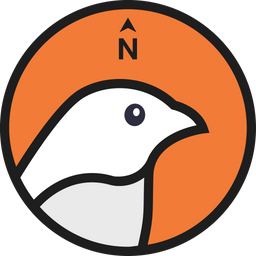Wat Matchimawasi, a royal temple, has a rich history that dates back to when it was originally known as Wat Non Mak Khaeng, an abandoned temple. Evidence confirming its status as a deserted site rests on two notable artifacts: the laterite chedi situated on the hill, and the white stone Buddha in the Naga posture (currently revered as Luang Pu Nak) housed within the chedi. Today, the white stone Buddha has been relocated to the front of the ordination hall, allowing residents of Udon Thani and nearby provinces to pay their respects. This Buddha statue has become famous for its sanctity, deeply intertwined with the identity of Wat Matchimawasi. Originally named Wat Non Mak Khaeng, the temple was granted royal recognition and established as a third-class royal temple on May 7, 1964. Located in the Mak Khaeng sub-district of Udon Thani, the temple spans an area of 15 rai and 1 ngan, surrounded by roads on all four sides – the east flanked by Mak Khaeng Road and Dussadee Road, the south by Watthana Road, and the north by Phonpisai Road. It lies in close proximity to various government locations, being just 40 meters from the Udon Thani Provincial Court, about 30 meters from the Red Cross Station 9, and approximately 120 meters away from the Provincial Hall. Directly behind it is Udon Thani Technical School, roughly 30 meters away, and about 250 meters from the Udon Thani Municipality Office. Additionally, it is located in a central area among several neighborhoods, including Huai Ban, Non, Mak Khaeng, Thung Sawang, and Kok Wua. In the reign of King Rama V, Major General Phra Chao Boromwongthoe Krom Luang Prajak Silapakom, the royal governor of northern provinces, initiated the restoration of Wat Non Mak Khaeng, leading to its re-establishment as a functioning temple. Renamed Wat Matchimawasi around 1893, it has since been recognized as a vital part of Udon Thani’s spiritual heritage. The statue of Luang Pu Nak, considered sacred, was discovered in this ancient site, and locals from Mak Khaeng and surrounding areas have continued the tradition of conducting water-pouring ceremonies during Songkran and participating in the rocket festival. In 1894, a new ordination hall was constructed at the site of the abandoned temple, and Luang Pu Nak was ceremonially installed as the principal Buddha image. Recognized officially with a boundary decree on January 27, 1894, the temple has undergone various renovations since. In 1951, Phra Thep Visutthacharn, the abbot, undertook the restoration of the ordination hall and renovated the statue of Luang Pu Nak, encasing the original statue within. Luang Pu Nak is crafted from white stone, standing 104 centimeters wide at the lap, and 260 centimeters tall (the statue itself is 149 centimeters high). As a symbol of Udon Thani, Wat Matchimawasi sees reverent believers bringing gold leaf to honor this revered statue, which remains an essential emblem of the temple's identity, represented in its logo with an image of the Naga posture Buddha. The artistry reflects the Rattanakosin style and signifies the lasting significance of this sacred site within Udon Thani, where Luang Pu Nak continues to preside over the temple.
Photo Credit: ททท.สำนักงานอุดรธานี
Wat Matchimawat
Province: Udon Thani
Reviews from Members
Be the first to review this place
Contact Information
Phone Number
0 4232 5406
Hour of Operation
- Monday:06:00 - 17:00
- Tuesday:06:00 - 17:00
- Wednesday:06:00 - 17:00
- Thursday:06:00 - 17:00
- Friday:06:00 - 17:00
- Saturday:06:00 - 17:00
- Sunday:06:00 - 17:00

